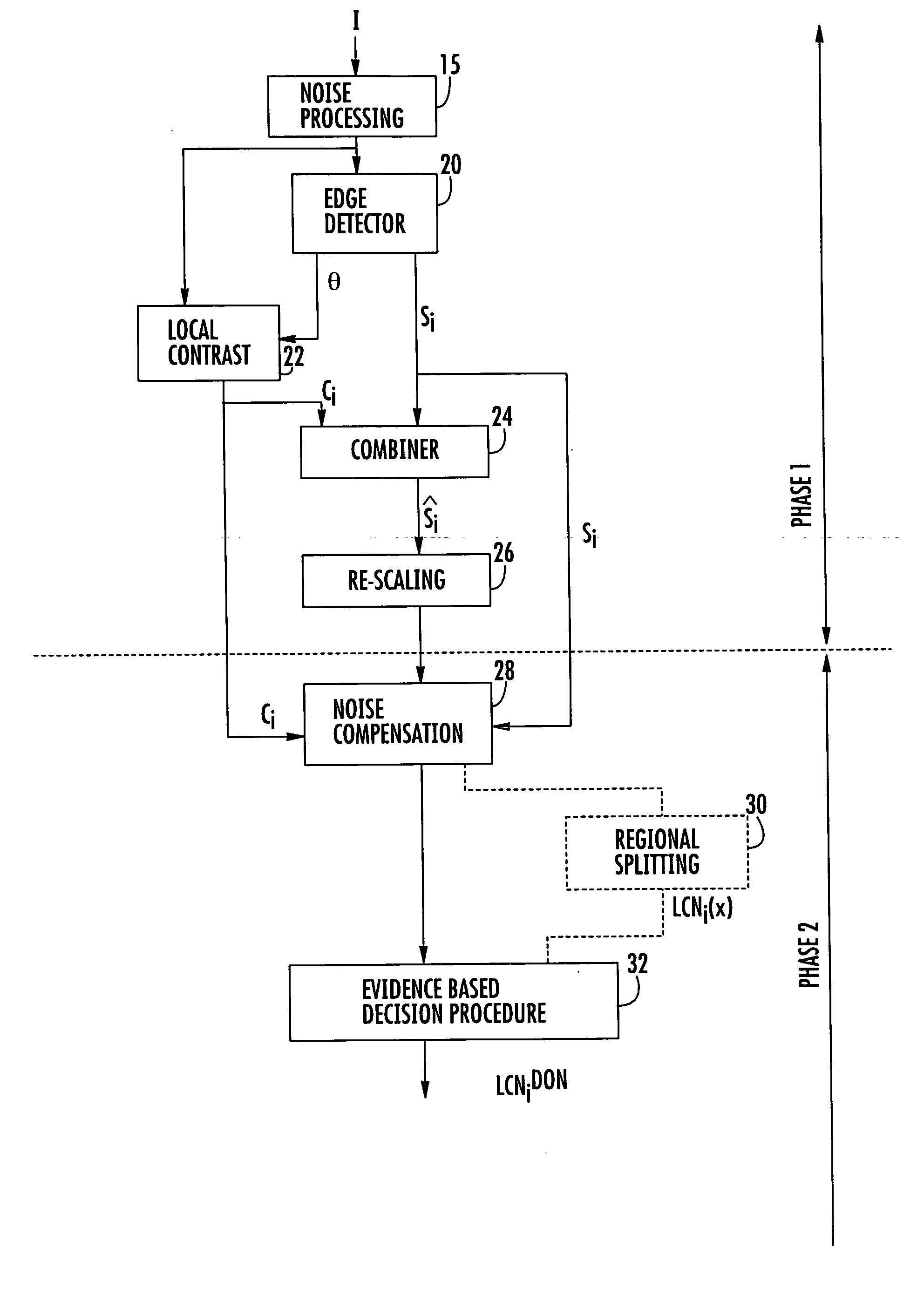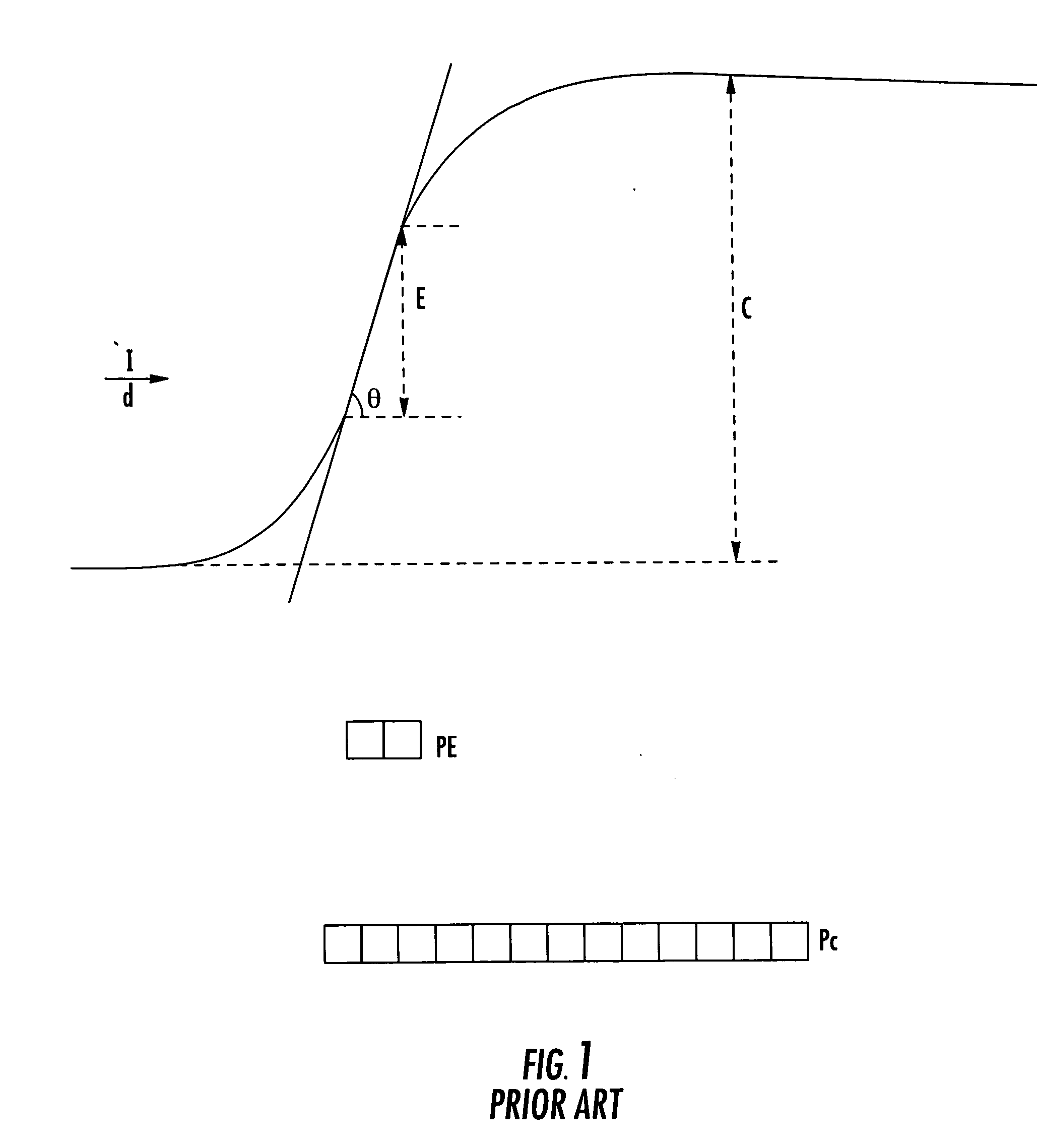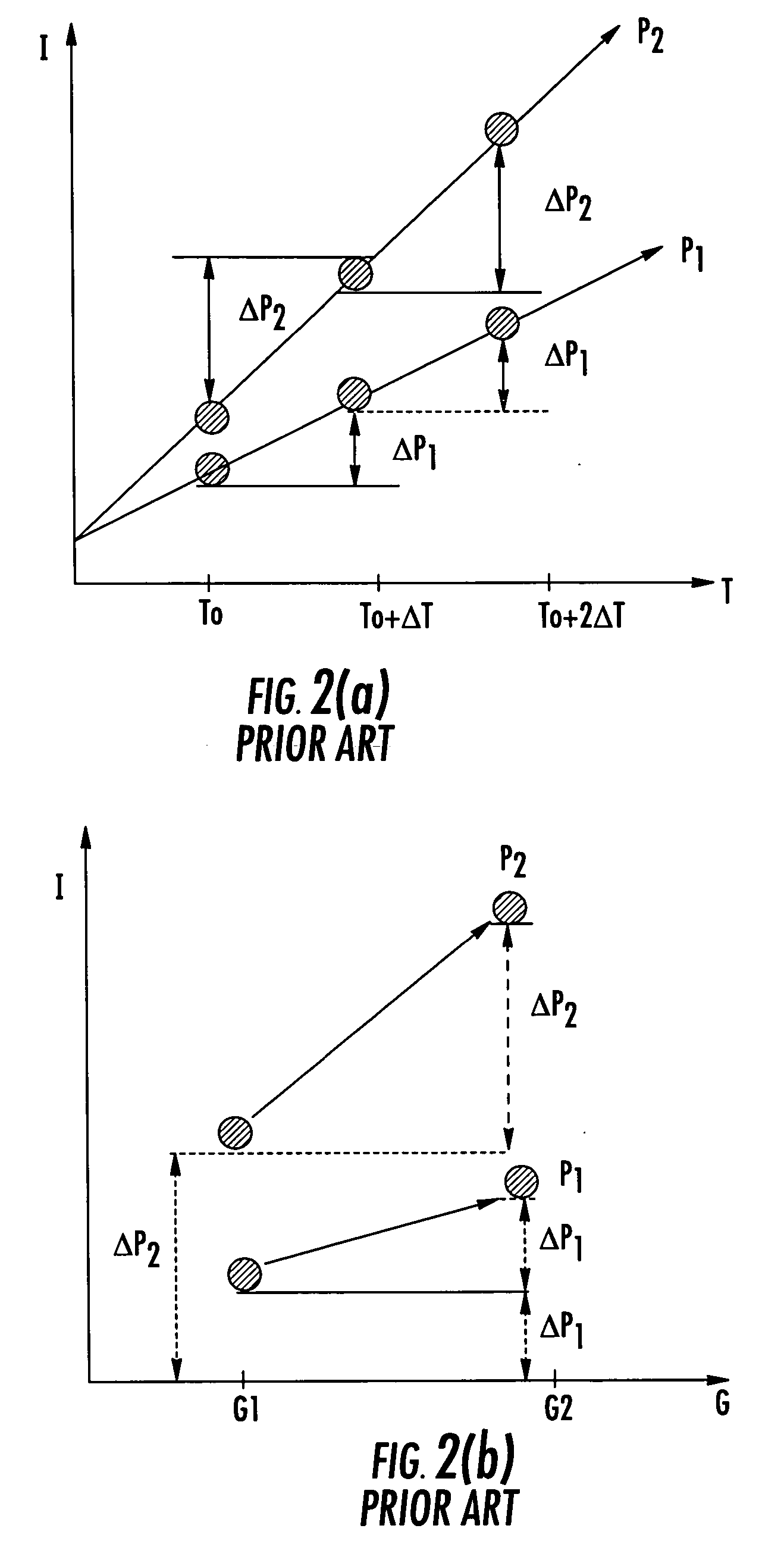Method of determining a measure of edge strength and focus
a technology of edge strength and focus, applied in the field of image processing, can solve the problems of affecting measurement by exposure time, unable to directly compare the different regions of a scene, and the above-described limitations of edge-based and contrast-based focus measurement methods are not merely theoretical abstractions
- Summary
- Abstract
- Description
- Claims
- Application Information
AI Technical Summary
Benefits of technology
Problems solved by technology
Method used
Image
Examples
Embodiment Construction
[0073] For the sake of brevity, the method of obtaining a focus measurement from an imaged scene in accordance with the present invention will be referred to throughout the following description as the local contrast normalization (LCN) process. The following discussion will provide a broad overview of the LCN process and will then discuss the individual elements of the invention in more detail. The description will finish with a discussion of the many applications of the LCN process.
General Overview of the LCN Process
[0074] Both conventional edge-based and contrast-based methods of focus measurement are fundamentally flawed because they attempt to solely equate focus with either edge strength or contrast. However, neither of these parameters is solely sufficient to adequately define a focus measurement. The LCN process overcomes this problem by introducing a new variable, namely a local contrast variable. The LCN process combines the local contrast variable with the edge-strengt...
PUM
 Login to View More
Login to View More Abstract
Description
Claims
Application Information
 Login to View More
Login to View More - R&D
- Intellectual Property
- Life Sciences
- Materials
- Tech Scout
- Unparalleled Data Quality
- Higher Quality Content
- 60% Fewer Hallucinations
Browse by: Latest US Patents, China's latest patents, Technical Efficacy Thesaurus, Application Domain, Technology Topic, Popular Technical Reports.
© 2025 PatSnap. All rights reserved.Legal|Privacy policy|Modern Slavery Act Transparency Statement|Sitemap|About US| Contact US: help@patsnap.com



